One of the most unusual stories about the ghost town of Port Crescent was the result of a shipwreck of the steam barge Osceola just off-shore. As the barge went aground on a nearby reef, resulting in tons of debris floating around the area beaches in what is now Port Crescent State Park. The beach was littered with debris from Saginaw Bay into Lake Huron past Huron City and Port Hope. The wreck had one good outcome. It kept many in the Thumb able to make bread throughout the winter of 1887-1888. It’s a neat little story about one of the more obscure Michigan shipwreck events.
The Wreck of the Steamer Barge Osceola
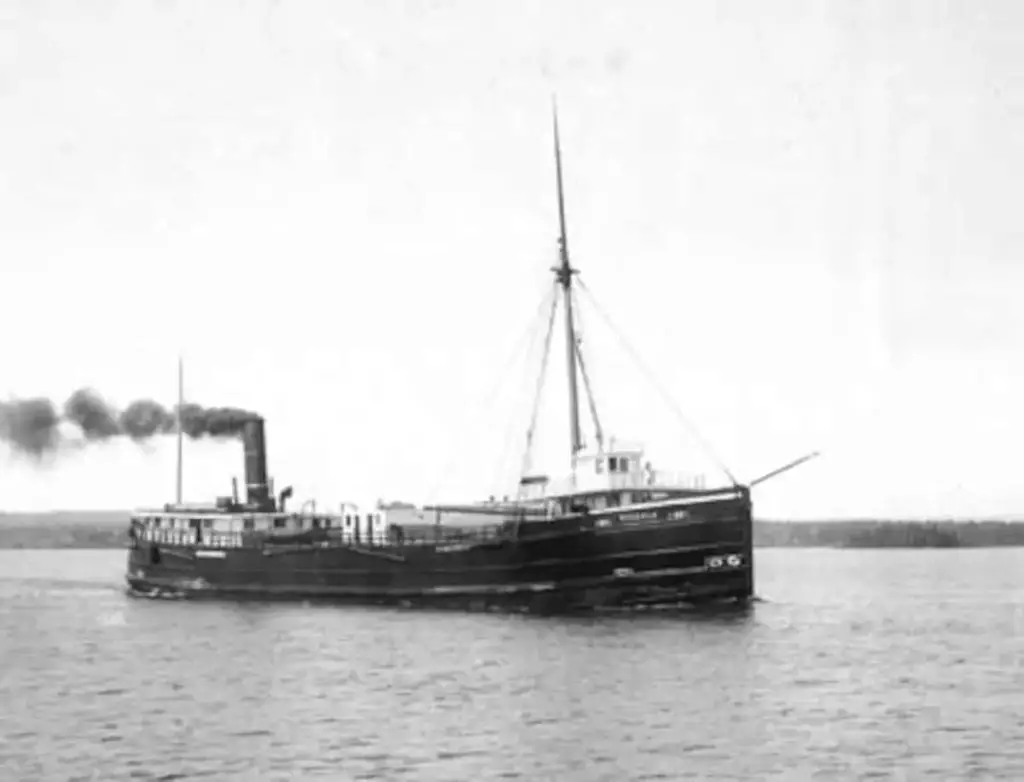
Osceola’s propellor steam barge was on her down trip from Duluth and carried a full cargo, principally Minneapolis milled flour headed for Buffalo. The ship struck a reef after encountering heavy fog at 2 am on November 7, 1887. There are at least three reported accounts by the various newspapers in 1887 of the ship going aground. The most agreed is that the ship went aground three miles from Hat Point, familiarly known as Loosemore’s Point, on the Flat Rock Reef. This reef is three miles north by northwest from the lumber town of Port Crescent and about 3 miles west of Port Austin.

The crew began to throw off flour barrels and endeavored to back off the stranded vessel. The cargo was over 700 tons of flour, mostly in 280 lb. paper linen-lined sacks for the European trade. About 300 tons were thrown overboard. However, the wind was blowing heavily from the southwest, and as the load lightened her up, she drifted further onto the reef.
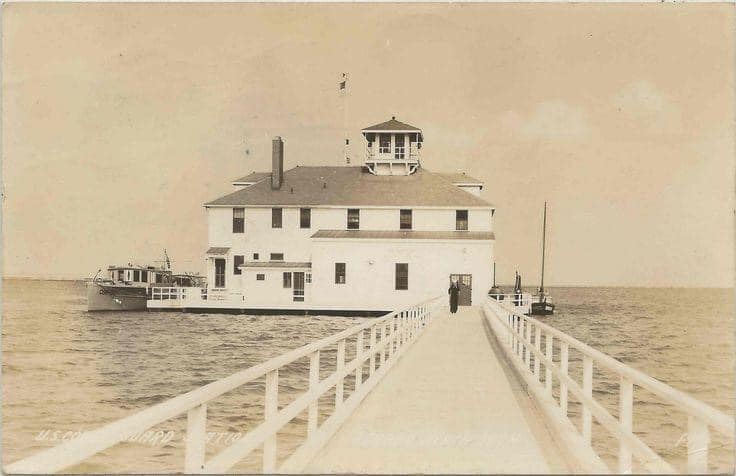
A clerk left the ship by yawl and sailed into Port Austin. There, he telegraphed for tugs and sent for the life-saving crew.
The Life Saving crew arrived and proceeded to help the crew salvage the ship. After working the pumps all day, it was thought best to leave the ship with the approaching night. Captain Gill and the life-saving crew scuttled the ship to let it rest on the reef. The Grindstone City life-saving crew rescued the men and took them to Port Austin. Monday evening, the captain and crew of 35 men were safely ashore.
The flour barrels are thrown overboard (to lighten the load and raise her), and nearly the entire amount floated around Pointe Aux Barques past Grindstone City and came ashore from Huron City to Port Hope. At night, folks from nearby farms that heard of the wreck went to the shore with teams to pick up the barrels found on the coast. Those who had worked hard all day retrieving the flour barrels from the lake, expecting big sums for their salvage effort, discovered that their barrels were gone.
On Wednesday morning, the life-saving crew again went out to the wrecked vessel, and the Sumner, an Alpena tug, made an effort to get to her but, owing to the heavy seas, was unable to do so.
Newspaper Accounts About the Osceola Wreck

The wreck of the steamer barge Osceola in November 1887 captured the attention of newspapers across Michigan, with multiple reports detailing the events surrounding its grounding and the subsequent rescue efforts.
Struggles to Free the Osceola
According to the Detroit Free Press on November 8, 1887, the Osceola, laden with over 1,000 tons of flour destined for the European market, struck a reef near Loosemore’s Point, three miles northwest of Port Crescent. Despite efforts by the crew to lighten the load by throwing 300 tons of flour overboard, strong southwest winds pushed the barge further onto the rocks. Monday night saw the wind shift to the north, bringing a powerful gale. Life-saving crews from Port Austin worked tirelessly, ultimately deciding to scuttle the vessel on the rocks to prevent further damage. The crew of 35 was brought safely to Port Austin, though the Osceola’s cargo was largely lost to the lake.
Steam Barge Osceola Wreak -1887
Article from Nov 9, 1887 Detroit Free Press (Detroit, Michigan) Disaster
The Flour Scramble
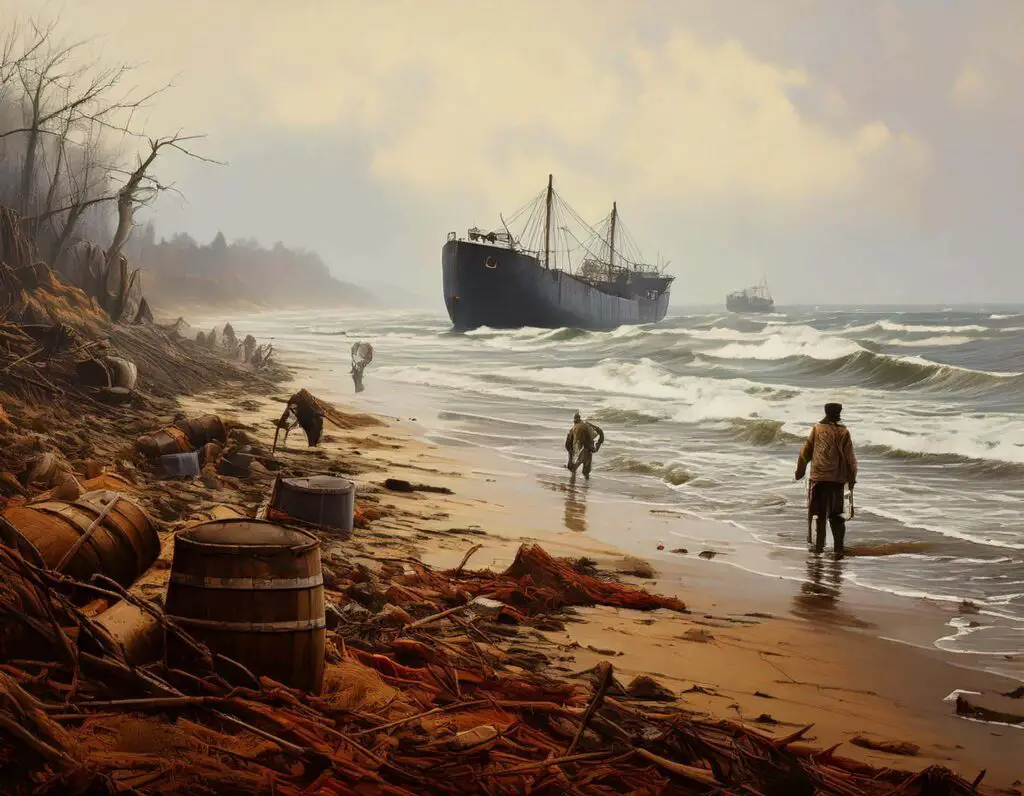
By November 14, 1887, reports from Port Huron newspapers described the chaotic aftermath of the wreck. As flour barrels and sacks washed ashore, residents from nearby communities flocked to the scene, hoping to collect what remained of the famous Red River Valley flour. The stranded barge continued to draw attention as tugboats attempted to free it. However, efforts were hindered by the shallowness of the water and shifting winds, forcing crews to abandon rescue operations until better conditions prevailed.
Wreak of the Osceola and Boody 1887
Article from Nov 15, 1887 Detroit Free Press (Detroit, Michigan) Disaster
Article from Nov 11, 1887 The Times (Harbor Beach, Michigan) Disaster
The Boody and Osceola’s Fate
A later account on November 17, 1887, highlighted the continued challenges faced by salvage crews. While tugboats made progress in rescuing the schooner Boody, also stranded nearby, the Osceola was deemed a total loss. A diver’s inspection revealed severe damage to the hull, making it impossible to save the vessel. The insurance representatives, who were on-site to assess the damage, clashed over the fate of the cargo, with claims that the flour had been sold off improperly. The scene was further marred by disputes among locals attempting to salvage flour and other materials from the wreck.
The Wreck of the Steamer Barge Osceola – 1887
Article from Nov 18, 1887 Detroit Free Press (Detroit, Michigan) Disaster
Grindstone Life Saving Station Assists to Save The Osceola
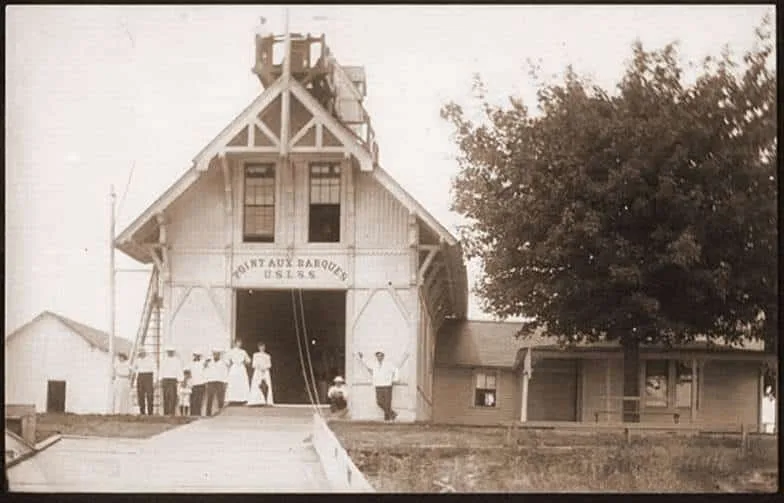
The Life Saving Station keeper and his men made numerous trips to the vessel for six weeks. They took the captain, the agents of the insurance companies, and others interested out to the wreck numerous times. The men watched nearby Port Austin during the night of November 16th as the pumping crew remained on board despite the threatening weather.
One local paper reported after the wreck, “The insurance agent is now in Port Austin, and, likely, a great many who got a year’s supply that night will see it departing again. Last Monday, an insurance agent (with supposed authority) started selling the remaining flour, 7 tons left on board at $2 to $2.50 a barrel.”
The local newspaper kept reporting on the story. Especially those from the “big city.” “Since then, another agent has appeared objecting to the sales of the first agent because it was being sold too cheap.” A week after the wreck came another report: “The Osceola still lingers on the Port Crescent reef, but a large supply of our town has laid in a winter supply of the “ staff of life. So let the cold winds blow!”
Finally, there came another local report. “Rowboats, sailboats, scows, rafts, etc., were at a premium the last week in which to visit the wreck and lug off a bag of flour.”
The Life Station crew subsequently helped to set up and take down the steam pumps and, at various times, in futile attempts to float the steamer. The pumps are able to accomplish nothing. The work was given up on the 19th of December, and the Osceola was soon abandoned. A wreck diver reported to the local newspapers that the hull “was badly broken up.” The total loss will be declared $60,000. $40,000 for the ship and $20,000 for the 700 tons of flour from the mills of Minneapolis with insurance at $3 a barrel.
At the town of Port Crescent, the wreck was within view. N. B. Haskell and others in town continued to watch the wreck reported in December: “For the information of those interested in the Osceola, she moves not” as he has a line on her, that is a “ landmark line.”
Salvage Operations of the Mary Pringle
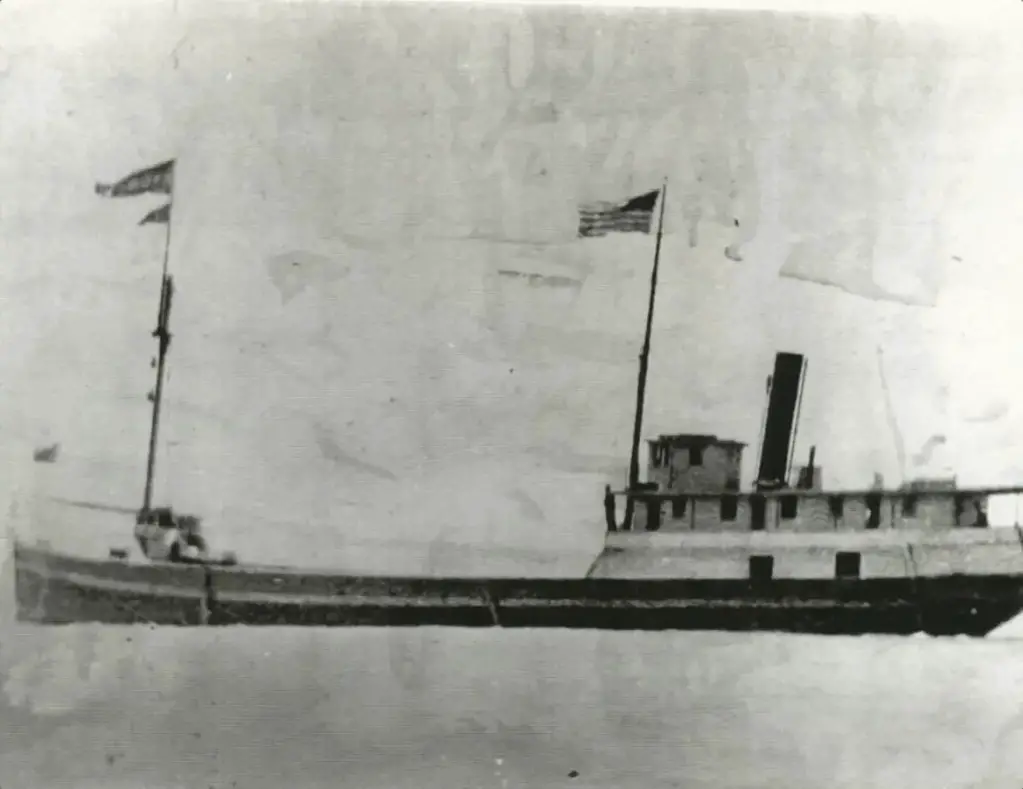
The Osceola was declared a total loss and remained on the reef until August. The steam barge Mary Pringle, with its two lighter masts and their crews, managed to salvage the Osceola and float her off the reef. Surprisingly, despite being abandoned in the lake for almost a year, the steamer was reportedly in good condition.”
Despite being declared a total loss, it was recovered and rebuilt at a significant cost. The ship was sold to a Canadian firm in 1905, and the name changed to Golspie. Thus, another chapter for a Michigan Shipwreck comes to a close.
Sources
- Alpena County, George N. Fletcher Public Library
- Annual Report of the United States Life-Saving Service By United States. Life-Saving Service
- Maritime History of the Great Lakes
- http://www.boatnerd.com/swayze/shipwreck/o.htm
- Memories of Harbor Beach Volume Two
- It Happened Here One Spring A Centennial History of Port Crescent

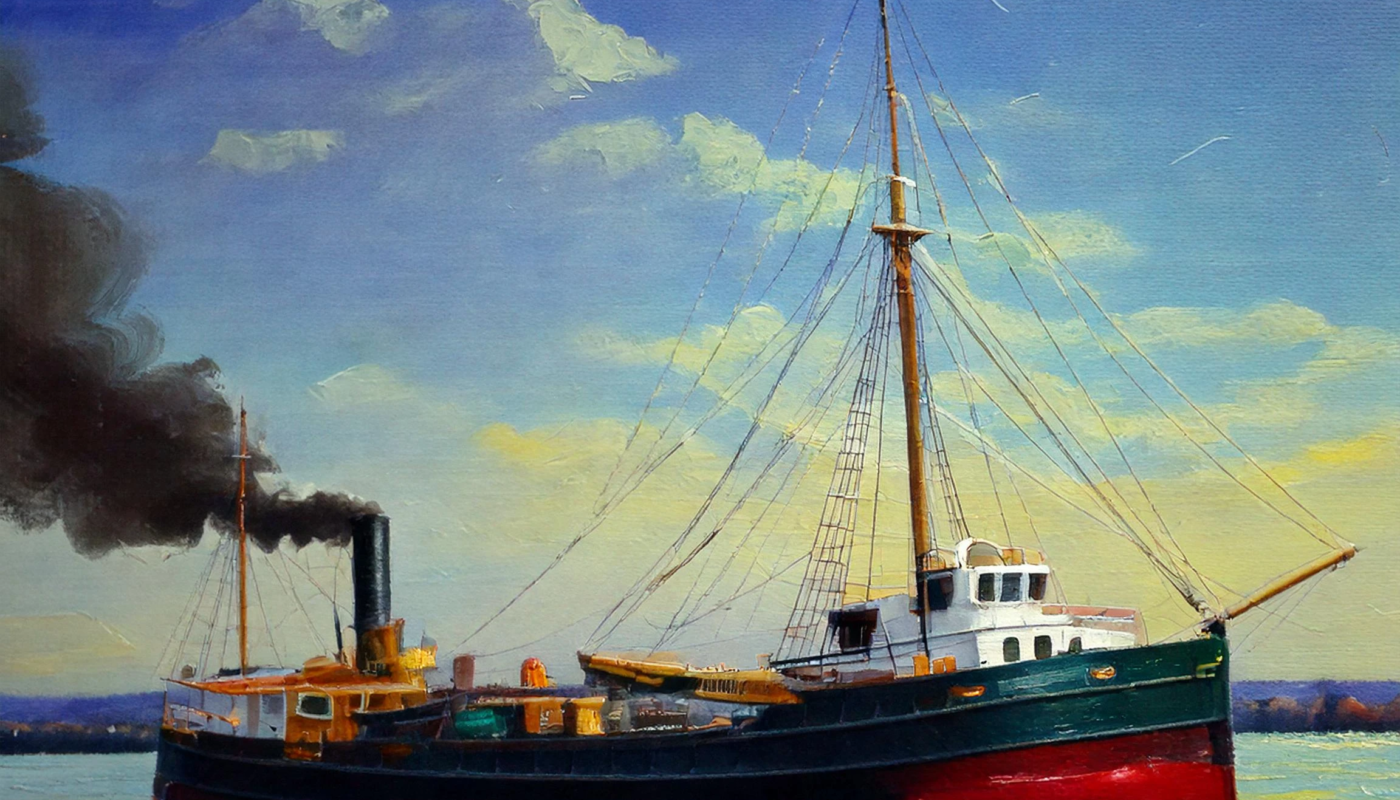




Nice article. One mistake, the ship WAS wrecked on Flat Rock Reef. Flat Rock Reef is 3 miles WEST of Port Austin. The local fisherman actually call the reef the Osceola.
Thanks…There are at least three reported accounts by the various newspapers in 1887 of the ship went aground. The most agreed is that the ship went aground at three miles out from Hat Point, familiarly known as Loosemore’s Point, on the Flat Rock Reef. This reef is three miles north by northwest from the lumber town of Port Crescent and about 3 miles west of Port Austin.